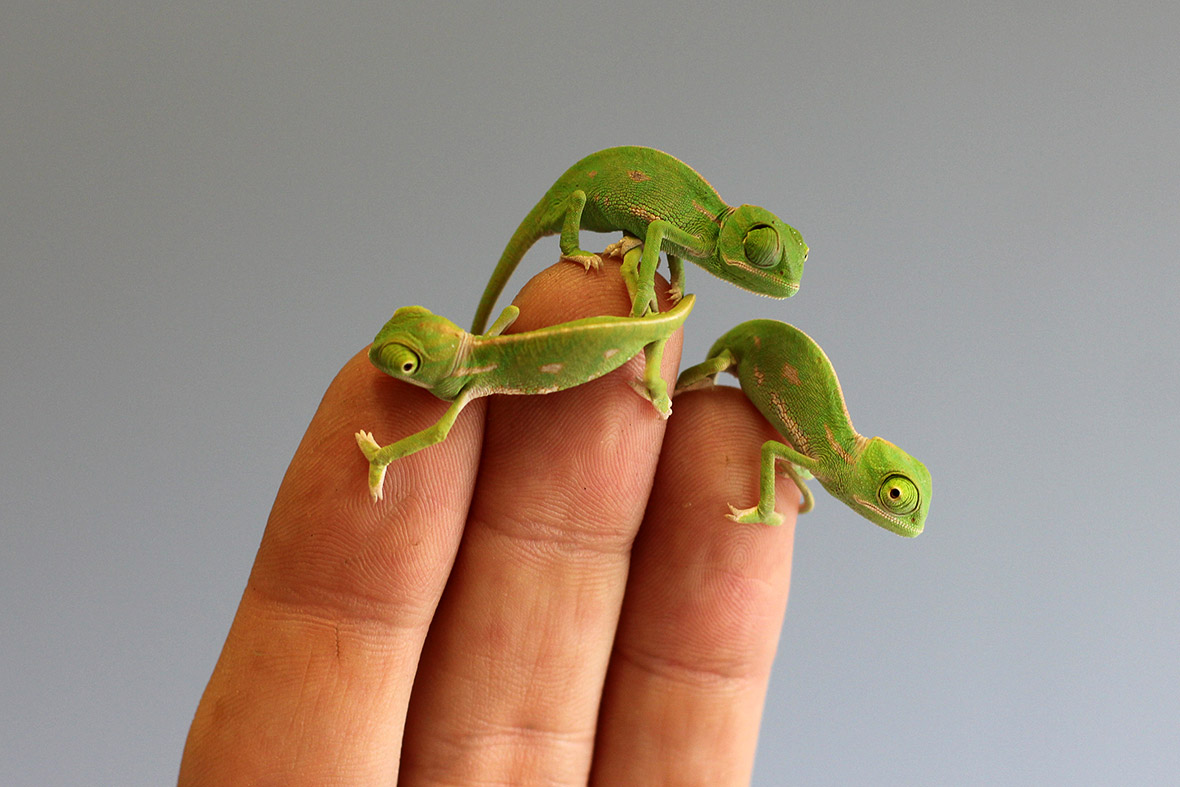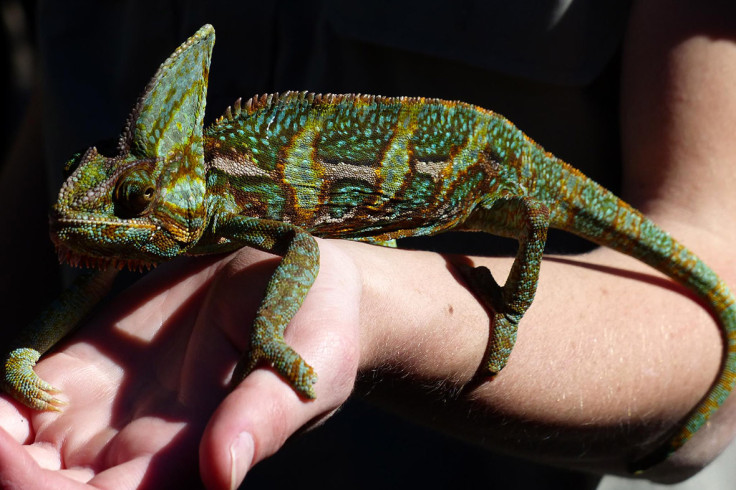Tiny bright green baby veiled chameleons hatch at Sydney's Taronga Zoo [Photos]
The teeny tiny veiled chameleons born at Sydney's Taronga Zoo are already making a big impression. About 5cm long, the hatchlings are small enough to sit comfortably on a pencil or fingertip.

Taronga has welcomed more than 20 of the reptiles, with the last of three clutches of eggs hatching this week. They are the first veiled chameleons born at the zoo in more than five years.
They are housed in a special temperature-controlled area behind the scenes at Taronga's Reptile World, where they have begun feeding on crickets and turning on a bright green colour display for keepers.



Reptile supervisor Michael McFadden said the chameleons, which are native to Yemen and Saudi Arabia, would be mature and able to showcase their full colour palette within a year.
"Veiled chameleons are a visually amazing species that we're fortunate to have at Taronga. While they're not endangered, they do play an important educational role in helping us to get people excited about reptiles and reptile conservation," said McFadden.
Normally a shade of green or brown while at rest, veiled chameleons can change colour when frightened, courting or defending territory.
"You'll see shades of green, yellow, aqua and even very dark brown or black depending on their temperature, mood and reproductive behaviour. However, they don't change colour to match a particular background like you see in cartoons," said McFadden.

Built for a life in the trees, the veiled chameleon has zygodactyl feet (two toes pointing forwards, two backwards) that can easily grasp branches. Its eyes can rotate independently and look in two directions at once. Its tongue can project 1.5 times its body length to capture prey.
"They can literally look forwards and backwards at the same time, which enables them to be on the watch for predators and food at all times," said McFadden.




Visitors will be able to see these adaptations for themselves when up to four of the new hatchlings go on display once they reach maturity. The remaining hatchlings will move to other Australian zoos and wildlife parks once they reach two to three months of age.
© Copyright IBTimes 2024. All rights reserved.






